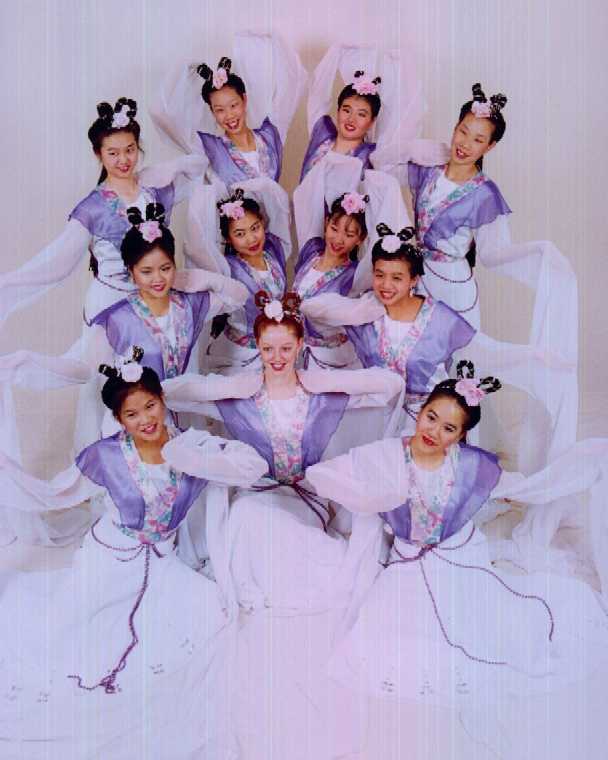

The
Atlanta Chinese Dance Company
presented
The Imperial Palace
on May 2, 1999
at the Rialto
Center for the Performing Arts
Atlanta, Georgia
|
PROGRAM
|
|
INTERMISSION |
a. Dance of the Manchu
b. Moonlight Over
the Spring River
h. Mongolian Dance |
 Traditionally,
red is the symbol of happiness. For centuries, the Chinese have taken great
pride in producing beautiful silk ribbons. The Red Ribbon Dance originated
from Chinese opera, and has been preserved since the Han dynasty. It has
become a traditional dance to perform during festivals.
Traditionally,
red is the symbol of happiness. For centuries, the Chinese have taken great
pride in producing beautiful silk ribbons. The Red Ribbon Dance originated
from Chinese opera, and has been preserved since the Han dynasty. It has
become a traditional dance to perform during festivals.
 WHITE
SLEEVES DANCE
WHITE
SLEEVES DANCE
This classical dance originated from the Jiang Nan folk dance, and was later performed in the palace during the Jin, Sui, and Tang dynasties for about 600 years.
 DANCE
OF THE LOTUS
DANCE
OF THE LOTUS
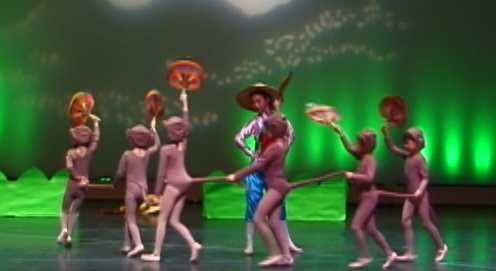 THE
MOUNTAIN GIRL AND THE MONKEYS
THE
MOUNTAIN GIRL AND THE MONKEYS
A mountain girl carries hats and fans walking down from the mountain. She meets a group of monkeys on her way. The monkeys take away all of her hats and fans, which makes the girl angry. Nevertheless, the smart girl thinks of a way to take back her hats and fans.
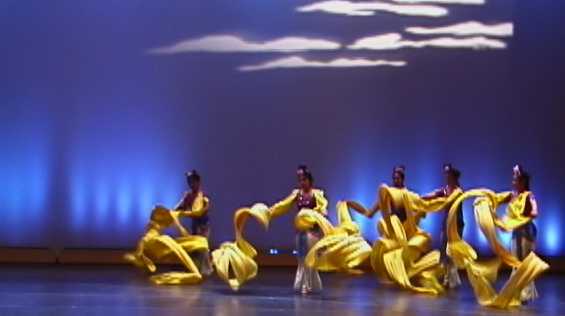 FLYING
CELESTIAL
FLYING
CELESTIAL
The choreographer of this dance was inspired by Buddhist engravings in the Dun Huang grotto during the Tang dynasty. The five celestials represent the vastness of the heavens and the grace of flying goddesses by manipulating billowing lengths of silk as they glide over the stage.
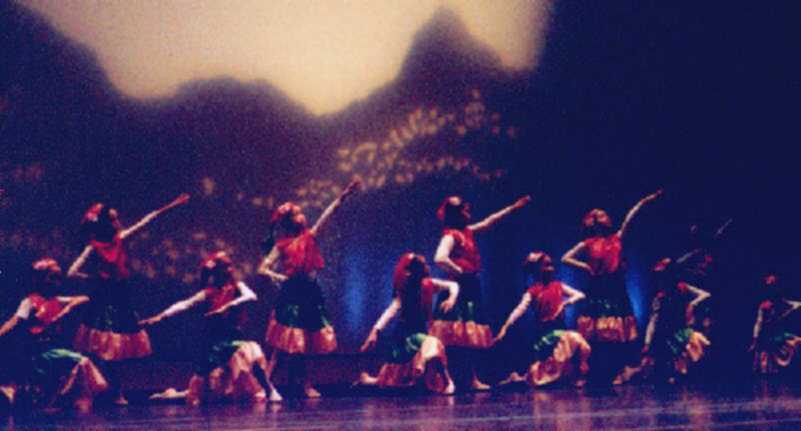 DANCE
OF THE YI
DANCE
OF THE YI
The population of the Yi is one of the larger ethnic groups among other minorities in China. They mostly live in the Yunnan province, although some live in Gui Zhou, Guang Xi, and Si Chuan. The Yi have their own tradition and culture. They like music, dance, and wearing multi-colored clothing.
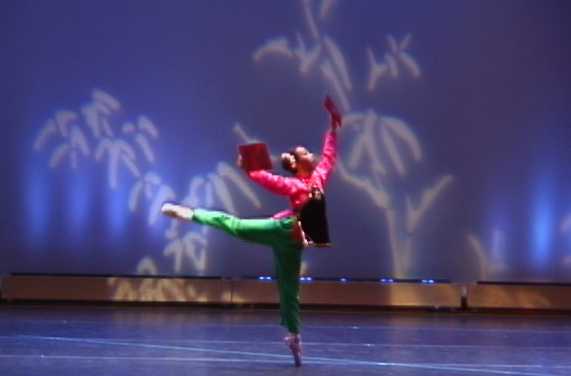 CHINESE
CONTEMPORARY BALLET "HAPPY NEW YEAR"
CHINESE
CONTEMPORARY BALLET "HAPPY NEW YEAR"
Chinese contemporary ballet is a new style that has developed in the past forty years. It incorporates classical ballet technique into Chinese dance style. Originally, this dance is an excerpt from a famous Chinese ballet drama The White-haired Girl. The dance depicts two girls celebrating Chinese New Year.
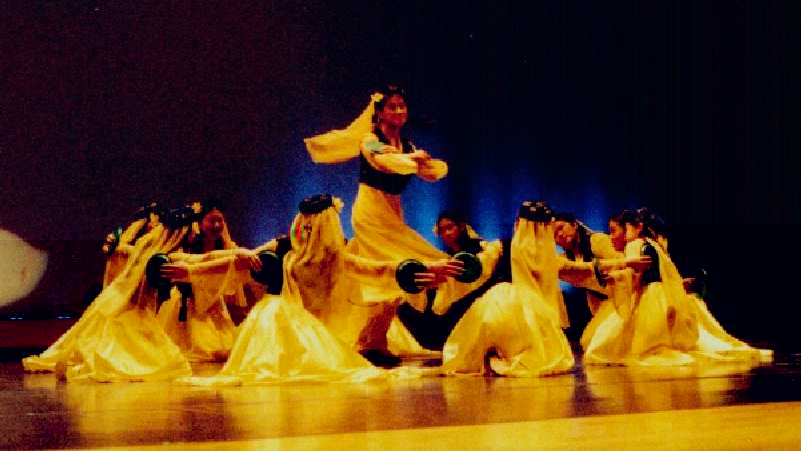 HAPPY
CELEBRATION
HAPPY
CELEBRATION
 ENJOYING
CHINESE OPERA ON THE STREET
ENJOYING
CHINESE OPERA ON THE STREET
This is a dance about a group of Han children watching Chinese opera on the street in front of their Grandma's house. They happily compete for a space in the audience while imitating the performers. This dance comes from the Shanxi Province Children's Arts Troupe.
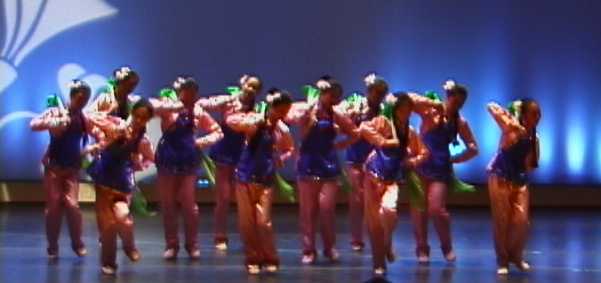 YUNNAN
FAN DANCE
YUNNAN
FAN DANCE
This dance is a popular Yang Ge that was inherited from southern China. Yang Ge is the traditional folk arts of the Han. Even though different styles of Yang Ge are influenced by different areas of customs, they all mostly express the feeling of joy. The most popular props used for Yang Ge are the fan and scarf.

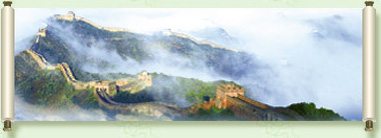 Historically, sword was a type of weapon.
After many years the sword technique gradually developed into a dance performance.
Sword Dance during the Tang dynasty was already quite advanced in technique.
Movements from the Sword Dance are forceful but elegant.
Historically, sword was a type of weapon.
After many years the sword technique gradually developed into a dance performance.
Sword Dance during the Tang dynasty was already quite advanced in technique.
Movements from the Sword Dance are forceful but elegant.
 DANCE
OF THE SNOWFLAKES
DANCE
OF THE SNOWFLAKES
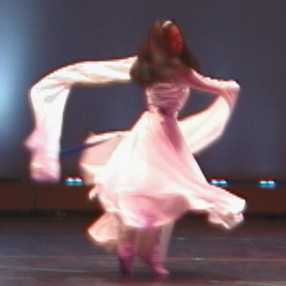
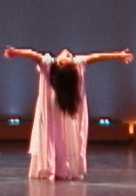
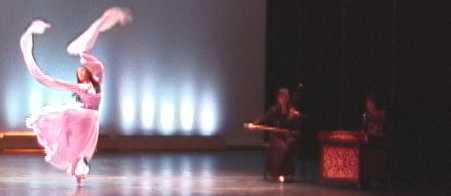 THE
LAMENT DANCE (live music accompaniment)
THE
LAMENT DANCE (live music accompaniment)
 TIBET
DANCE
TIBET
DANCE
 IMPERIAL
PALACE
IMPERIAL
PALACE
The Qing was the last dynasty in Chinese history. The Manchu people who have very elegant costumes ruled it. It also has a great influence on Chinese costume history. The Manchu people are unique among the Chinese for their particular style of headdress and platform shoes, which makes them very different from other ethnic groups.

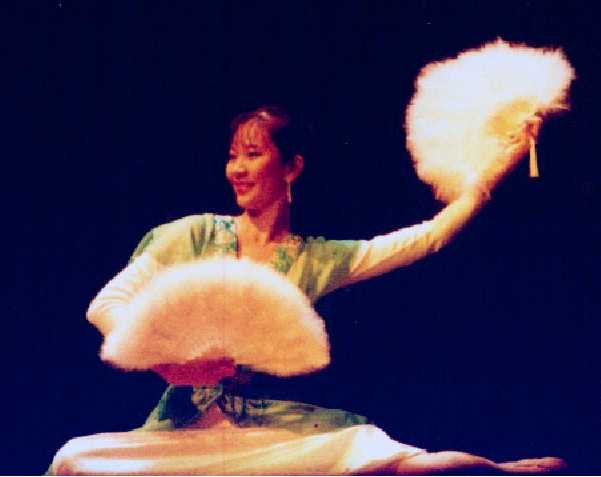 Moonlight
Over the Spring River
Moonlight
Over the Spring River
The choreography of this graceful dance was designed to accompany a classical tune of the same name. It features two ladies who dance under the moonlight and express their yearning with the gracious movements of the feather fans.
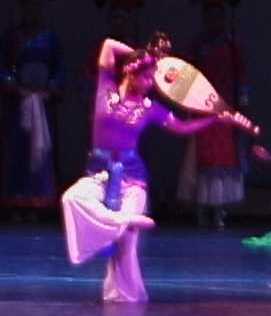 Dun
Huang Solo
Dun
Huang Solo
For five thousand years of Chinese history,
Dun Huang music and dance from the Tang dynasty was one of the most prosperous
periods in arts history. The classical Dun Huang dance style has its influence
from India due to the introduction of Buddhism to China. The image of the
dancers on mural painting from the past has shown us the unique Dun Huang
style in Chinese dance history.
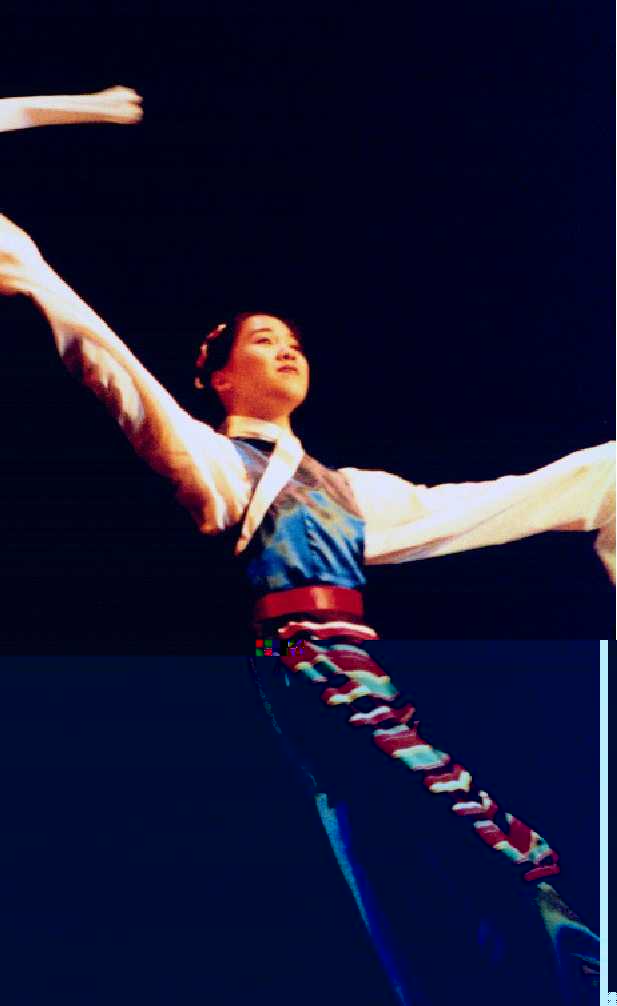
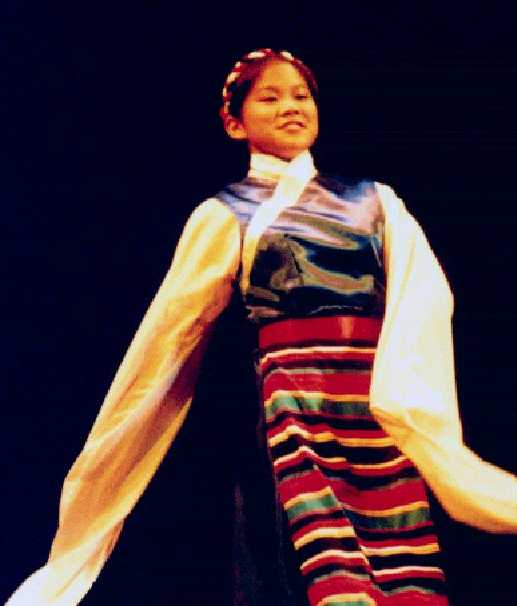 Tibet
Duet
Tibet
Duet
Most Tibetans live in the westhern part of China in places like Qing Hai, Yunnan, Gan Shu, Si Chuan, etc The characteristics of the dance include bouncing knees, tapping and brushing the floor. Their dance reflects their happiness in life.
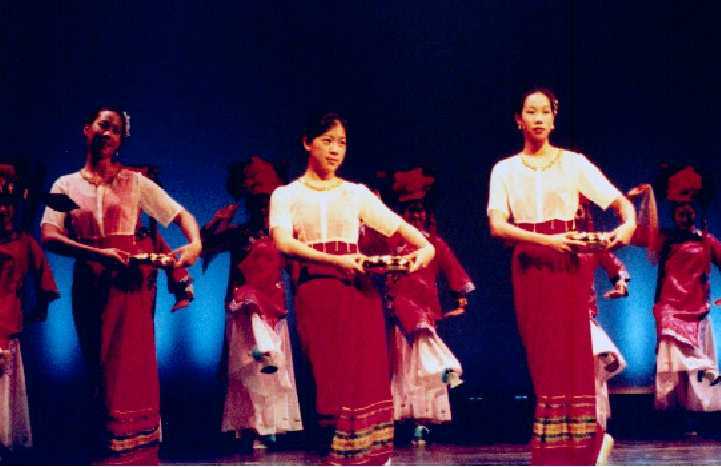 Dance
of the Water Sprinkling Festival
Dance
of the Water Sprinkling Festival
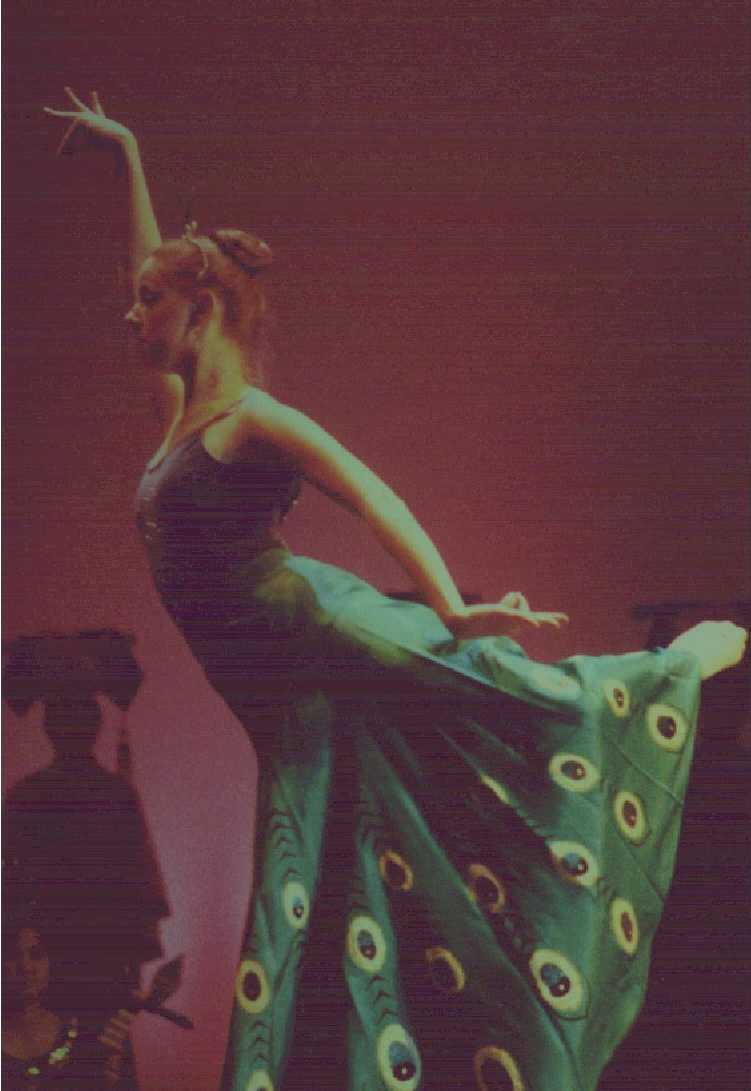 Peacock
Solo
Peacock
Solo
 Mongolian
Dance
Mongolian
Dance
 Finale
Finale
Introduction
.|.
About
ACDC .|.
Past
Performances
Most
Recent Performance.|.Upcoming
Performance.|.
Chinese
Dance History
Chinese
Dance Classes
Created by the Atlanta Chinese
Dance Company
Copyright reserved